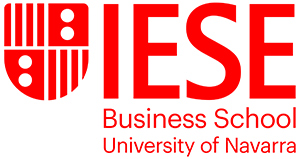An MBA or a Master’s? To answer this question there are several layers you should consider:
FIRST
MBA meaning: MBA stands for Master of Business Administration, a graduate degree focused on business management.
Master’s meaning: It’s also a graduate degree focused on business management, but it does so by working on a specific topic (such as big data, finance, digital marketing…).
AND SECOND
What kind of learning experience do you want? What is feasible for you in terms of the time, money and energy investments you’ll have to make? What is your preferred teaching style? Perhaps most importantly, where do you see yourself one, three or 10 years after graduation?
5 issues to keep in mind while deciding between an MBA and a Master’s
1. Background
In the past 20 years, the number of Master’s degrees offered in the European Higher Education Area (EHEA) has soared. With the number on offer in the thousands, candidates have more choices than ever. But this landscape is not necessarily easy for you to navigate.
Technically, any Master’s in the field of business administration is an MBA. After all, the acronym stands for Master in Business Administration. In certain countries, this can lead to confusion.
What further adds to the confusion is that although there are several accrediting bodies, there is no global regulatory framework around what should be called an MBA. Any education provider is free to label their Master’s degrees in business as MBAs.
2. Diversity of backgrounds and profiles: Where do you fit?
Generally speaking, the main difference between a Master’s degree in business and an MBA is that the MBA will require considerable full-time work experience from its students, whether it is the traditional full-time two-year MBA, its one-year counterpart or the part-time Executive MBA formats. At the best full-time MBA programs, the average work experience of candidates is roughly five years.
Other Master’s programs, on the other hand, are generally meant to be a continuation of academic studies beyond the Bachelor’s level. Some students will choose to work between their Bachelor’s and their Master’s but it is not a requirement in most cases and more often than not will take the form of internships.
Thus, the MBA is a degree aimed at experienced professionals who want to acquire a strong foundation in business. Although candidates with previous business studies are quite common, typically representing roughly a third of candidates at a top program, they are not the norm. However, engineers who wish to broaden their skillset, along with lawyers, architects, medical doctors and scientists are all included in the applicant pool. The idea behind the MBA is this eclectic group of students will learn from each other and mutually enrich the classroom experience.
3. Method of teaching: Lectures or experiential learning?
The teaching style in a Master’s degree is unlikely to depart much from traditional undergraduate studies. Lectures are normally the leading teaching method, although more and more case studies are used.
Teaching at most MBA programs combines lectures and case studies like in a Master’s. The difference is that MBA teaching tends to be more experiential, through the use of case studies and project-based work. This is a truly immersive teaching method and allows students to leverage their backgrounds. Learning while doing describes this quite well. This method has proven itself to be one of the most efficient learning methods.
4. Career outcomes: Where do I see myself in the medium term?
For other Master’s degrees, the career outcome might not be that straightforward. On the one hand, the bulk of corporate graduate hiring, especially in Europe, is aimed at graduates without significant work experience, so opportunities abound. On the other hand, Master’s degrees are not a differentiator in the job market. With the exception of very reputable schools, the main effect of a Master’s degree is that it will distinguish you from other candidates whose education stopped with the Bachelor’s degree.
MBA programs, on the other hand, are analyzed and tracked very closely when it comes to career outcomes. According to a Financial Times report from 2017, the most important motivators to do an MBA program were the following:
- Increased earnings
- Management development
- Networking
- Change of career
- Change of employer
Read this article to discover The career plan: How you can keep growing professionally.
5. Costs and financing
Even though there are big differences between subjects, geographies and subjects, a Master’s program in Europe normally costs between €5,000 and €10,000 per year. Tuition fees at top full-time MBA programs are considerably higher. According to the Financial Times, the tuition at the world’s top 100 MBA programs averaged roughly $110,000 in 2017.
While this represents an important investment, more so once foregone salary and living expenses are taken into account, this needs to be contrasted with the significant earnings increase a top MBA generally represents.
As mentioned, the Financial Times MBA ranking from 2017 shows that graduates from the top 100 MBA programs doubled their income within three years of graduation. Regarding financing, roughly 80% of students from these programs receive support in terms of loan facilitation or scholarships.
Read this article to find how to finance an MBA.
How do I find out if an MBA or another Master’s is right for me?
Perhaps this article left you with even more questions than answers. Should you wish to reflect deeper on these questions, please visit the IESE MBA program’s homepage, where you can find out how to contact the MBA team or learn more about our Open Days exploratory sessions for interested students.

















